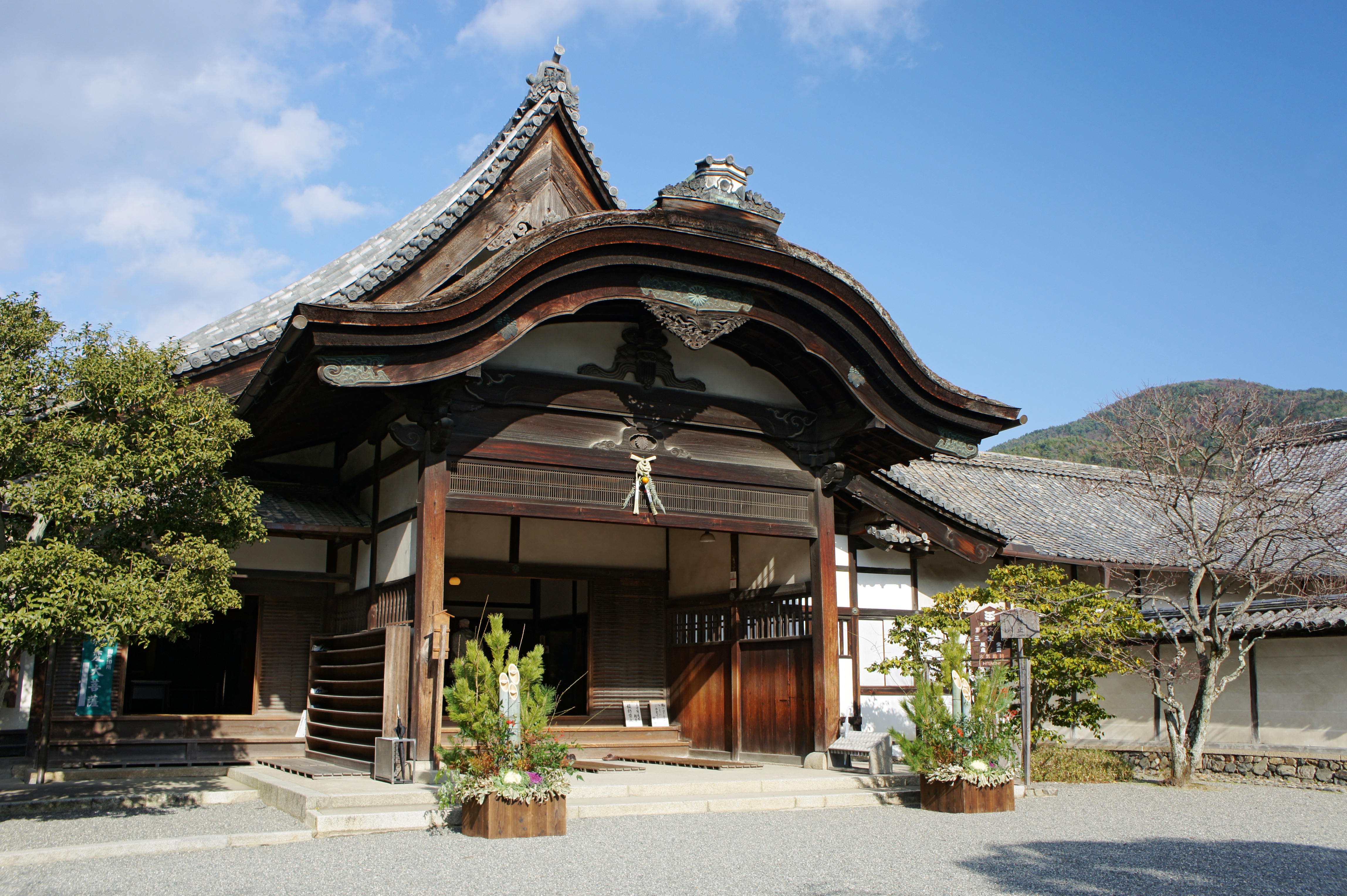Sanbō-in on:
[Wikipedia]
[Google]
[Amazon]

 is a Buddhist temple in southern Kyoto,
is a Buddhist temple in southern Kyoto,
''The Lure of the Japanese Garden,'' p. 27.
/ref>
Sanbō-in.
The temple complex had fallen into disrepair during the Sengoku period. A majority of the present buildings and the garden of Sanbō-in date from the late 16th century. The garden is designed as a stroll garden with a large pond and several paths and bridges. The garden is said to contain over 700 stones; and one of them, called the Fujito stone, is said to have cost over 5,000 bushels of rice. Sanbō-in is also a noteworthy illustration of a landscape garden which is designed for viewing from a specific perspective within a building. As laid out in the Momoyama period, the garden remains one of the finest uses of the "fortuitous crane," the "tortoise" and the "isle of eternal youth." These poetic terms identify specific ways in which stones and ponds are poised in a prescribed, esoteric relationship. In 1598, Toyotomi Hideyoshi helped redesign the garden before his famous cherry blossom-viewing party. The karamon was either transferred from
''From Castle to Teahouse: Japanese Architecture of the Momoyama Period.''
Tokyo: Tuttle Publishing.
OCLC 512972
* Ponsonby-Fane, Richard Arthur Brabazon. (1956)
''Kyoto: The Old Capital of Japan, 794-1869.''
Kyoto: The Ponsonby Memorial Society
OCLC 36644
Samboin garden
*
Classical elements of gardens
aerial view and map image
{{DEFAULTSORT:Sanbo-In Religious organizations established in the 16th century Buddhist temples in Kyoto Special Places of Scenic Beauty Special Historic Sites Important Cultural Properties of Japan Monzeki

 is a Buddhist temple in southern Kyoto,
is a Buddhist temple in southern Kyoto, Japan
Japan ( ja, 日本, or , and formally , ''Nihonkoku'') is an island country in East Asia. It is situated in the northwest Pacific Ocean, and is bordered on the west by the Sea of Japan, while extending from the Sea of Okhotsk in the north ...
, known today primarily for the quality of its garden.Main, Alison. (2002)''The Lure of the Japanese Garden,'' p. 27.
/ref>
History
Sanbō-in was established in the Azuchi-Momoyama period (1582–1615). It was a sub-temple of Daigo-ji, which is a Heian period temple founded in 902.Garden directorySanbō-in.
The temple complex had fallen into disrepair during the Sengoku period. A majority of the present buildings and the garden of Sanbō-in date from the late 16th century. The garden is designed as a stroll garden with a large pond and several paths and bridges. The garden is said to contain over 700 stones; and one of them, called the Fujito stone, is said to have cost over 5,000 bushels of rice. Sanbō-in is also a noteworthy illustration of a landscape garden which is designed for viewing from a specific perspective within a building. As laid out in the Momoyama period, the garden remains one of the finest uses of the "fortuitous crane," the "tortoise" and the "isle of eternal youth." These poetic terms identify specific ways in which stones and ponds are poised in a prescribed, esoteric relationship. In 1598, Toyotomi Hideyoshi helped redesign the garden before his famous cherry blossom-viewing party. The karamon was either transferred from
Fushimi castle
, also known as or Fushimi-Momoyama Castle, is a Japanese castle located in Fushimi Ward, Kyoto.
Fushimi Castle was constructed from 1592 to 1594 by Toyotomi Hideyoshi at the end of the Sengoku period as his retirement residence. Fushimi Castle ...
or built there at the same time, and the main drawing room (表書院 omote shoin), another National Treasure, was finished shortly before Hideyoshi's death in September of that year.Kirby, John B. (1962). ''From Castle to Teahouse: Japanese Architecture of the Momoyama Period.'' pp. 187. Hideyoshi's envisioned garden was completed in 1618, and Yoshiro, the chief gardener, received the title of "Kentei" (Excellent Gardener) for his work.
See also
* List of Special Places of Scenic Beauty, Special Historic Sites and Special Natural Monuments * List of Buddhist temples in Kyoto * List of National Treasures of Japan (residences) *For an explanation of terms concerning Japanese Buddhism, Japanese Buddhist art, and Japanese Buddhist temple architecture, see the Glossary of Japanese Buddhism.Notes
References
* Kirby, John B. 1962''From Castle to Teahouse: Japanese Architecture of the Momoyama Period.''
Tokyo: Tuttle Publishing.
OCLC 512972
* Ponsonby-Fane, Richard Arthur Brabazon. (1956)
''Kyoto: The Old Capital of Japan, 794-1869.''
Kyoto: The Ponsonby Memorial Society
OCLC 36644
External links
* University of Pennsylvania, Fine Arts Library Image CollectionSamboin garden
*
Bowdoin College
Bowdoin College ( ) is a private liberal arts college in Brunswick, Maine. When Bowdoin was chartered in 1794, Maine was still a part of the Commonwealth of Massachusetts. The college offers 34 majors and 36 minors, as well as several joint eng ...
Classical elements of gardens
aerial view and map image
{{DEFAULTSORT:Sanbo-In Religious organizations established in the 16th century Buddhist temples in Kyoto Special Places of Scenic Beauty Special Historic Sites Important Cultural Properties of Japan Monzeki